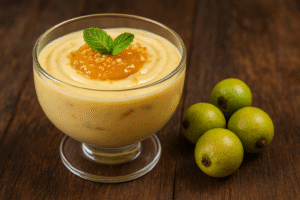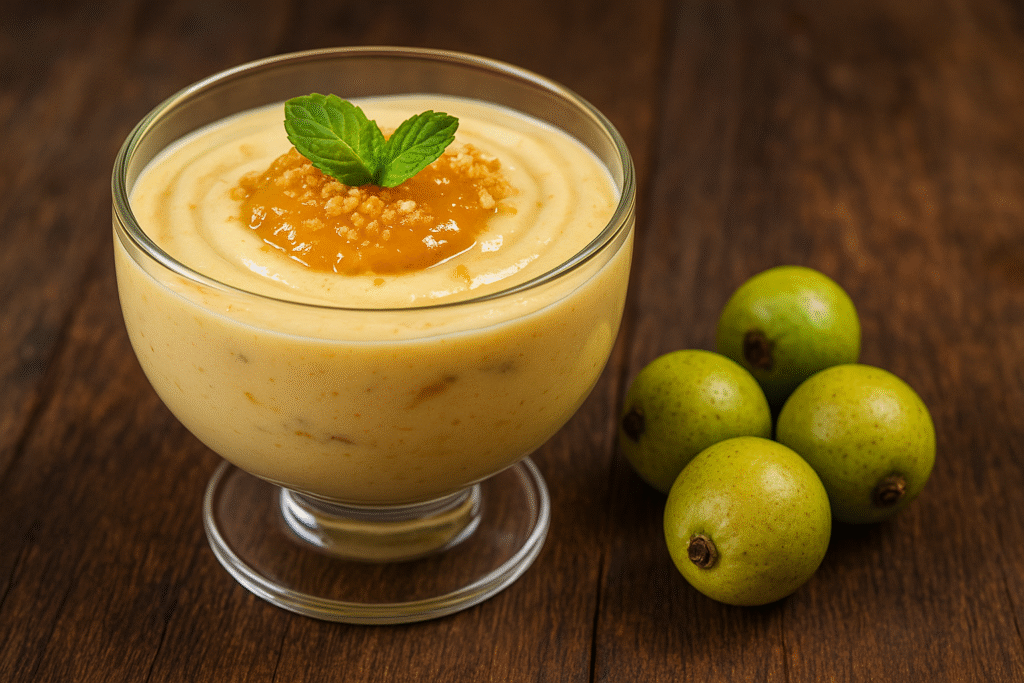The guabiroba is a native Brazilian fruit that, despite its remarkable flavor and nutritional properties, remains relatively unknown to most people. Unlike widely popular fruits such as mango, guava, or passion fruit, guabiroba has not gained a strong presence in supermarkets or in the daily diet of Brazilians. But why is that?
In this article, you will discover 5 reasons why guabiroba is not well known, exploring cultural, economic, and marketing factors that have limited the popularity of this unique fruit.
1. Limited Geographic Distribution
The first reason why guabiroba is not well known is its restricted geographic distribution. This fruit is typical of the Brazilian Cerrado and some areas of the Atlantic Forest, naturally growing in regions such as Goiás, Minas Gerais, and parts of São Paulo’s countryside.
Because it grows mainly in these areas, people living in other states have little or no contact with the fruit. In regions where guabiroba does not grow naturally, there is little incentive to cultivate or commercialize it. As a result, guabiroba rarely reaches markets or grocery stores, remaining confined to local communities and small-scale producers.
2. Lack of Commercial Production
Another key factor is the lack of large-scale guabiroba production. While fruits like oranges and bananas are cultivated in vast plantations to meet national and international demand, guabiroba is still harvested on a much smaller scale, often by local extraction.
Without structured cultivation, the fruit does not reach the average consumer. On top of that, guabiroba is highly perishable, which makes long-distance transportation difficult. This logistic limitation significantly reduces its market expansion, keeping it as an underappreciated regional fruit.
3. Low Publicity and Awareness
The lack of awareness is another reason why guabiroba is not well known. Very few campaigns or educational initiatives highlight the nutritional benefits of this fruit. For many, guabiroba is discovered only when visiting rural areas or hearing about it from locals.
By contrast, fruits like açaí and cupuaçu gained national and international recognition through marketing and export initiatives. Guabiroba, however, has never received the same promotional investment, which explains why even many Brazilians in urban centers have never tasted or even heard of it.
4. Competition With More Popular Fruits
Brazil’s fruit market is extremely competitive, and guabiroba is not well known because it competes with fruits that are already part of popular culture. Apples, grapes, pineapples, and watermelons dominate consumer choices and are deeply ingrained in food traditions.
When shoppers go to the market, they rarely look for fruits they don’t know. As a result, guabiroba is overlooked, even though it has a pleasant taste and strong nutritional potential. Without significant exposure, it struggles to stand out in a market filled with familiar and affordable options.
5. Limited Presence in Research and Gastronomy
Finally, guabiroba is not well known because it has not been widely explored in science or gastronomy. While there are some academic studies on its properties, they are not widely publicized. Moreover, professional chefs have not yet incorporated guabiroba into innovative recipes that could spark curiosity among consumers.
Without scientific promotion and culinary creativity, guabiroba remains seen as a regional curiosity. If more effort were put into developing desserts, juices, and unique dishes featuring guabiroba, its popularity could increase dramatically—just like what happened with açaí.
Future Opportunities for Guabiroba
Despite these challenges, guabiroba has great potential for the future. With growing global interest in native and sustainable foods, this fruit could find space in restaurants, organic fairs, and even international markets.
Programs that encourage sustainable cultivation and highlight the biodiversity of the Cerrado and Atlantic Forest could elevate guabiroba’s status. Also, adventurous consumers are increasingly open to trying new flavors, making this the perfect time for guabiroba to gain recognition.
Conclusion
In short, guabiroba is not well known for five main reasons: its limited geographic distribution, the lack of large-scale production, low publicity, competition with popular fruits, and little presence in science and gastronomy.
However, these obstacles can be overcome through investment, awareness campaigns, and creative initiatives. Guabiroba is a delicious, nutritious, and truly Brazilian fruit that deserves a place on the market and on people’s tables.
Whether enjoyed fresh, in juices, or in desserts, guabiroba has the potential to surprise consumers and become a symbol of the rich biodiversity of Brazil.

Elevate Your Desserts with KMwares Tulip Glass Bowls
This 6-piece set of elegant footed tulip glass bowls is perfect for sundaes, ice cream, fruit, salads, snacks, cocktails, trifles, or holiday parties. Add a touch of charm to every occasion!

Discover the Fascinating World of the Sensitive Plant
Curious about Mimosa pudica? Learn why this unique “touch-me-not” plant captures so much attention with its surprising reactions and natural beauty.

